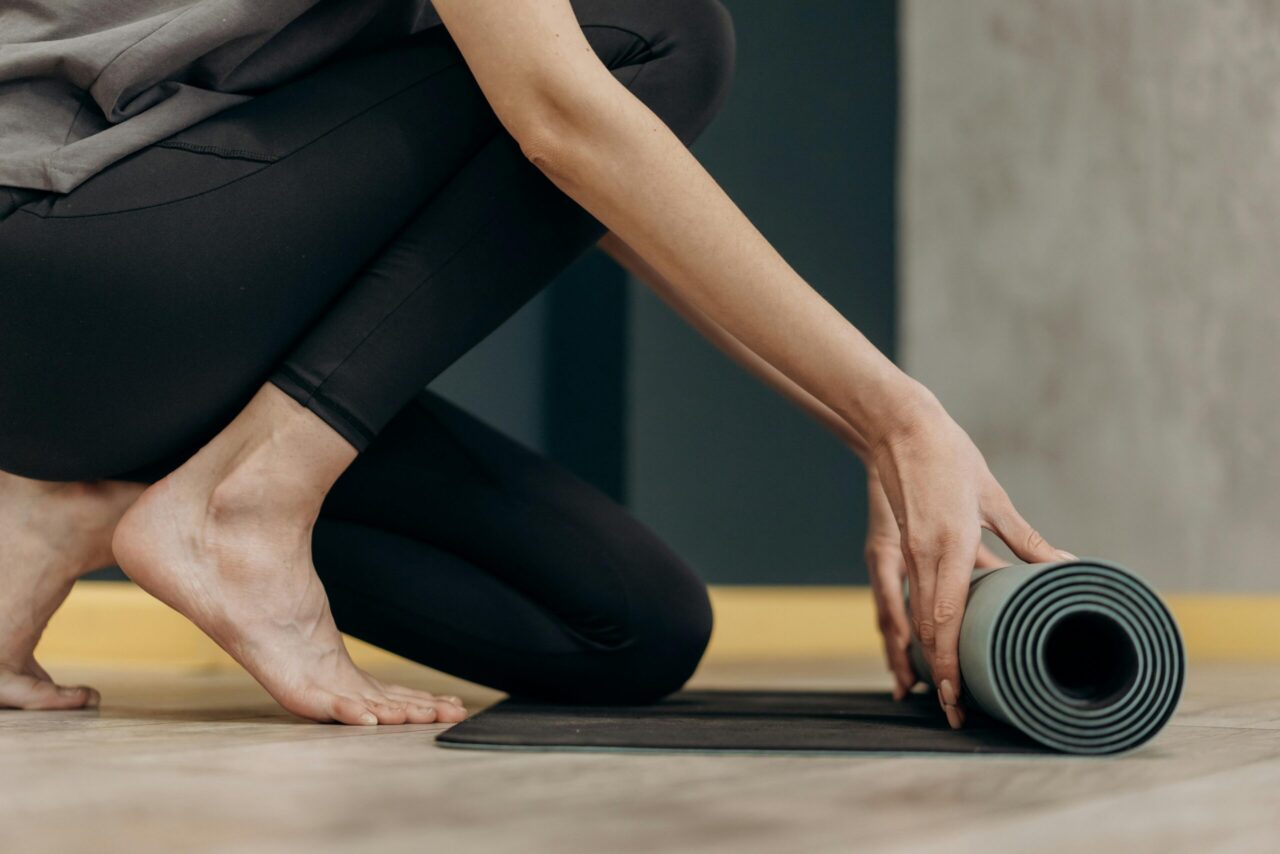16 Feb Beyond the Mat: The True Power of Yoga
When people think of yoga, they often imagine flowing through physical poses, stretching, and building strength. But yoga is far more than a workout. Its true power lies in its ability to transform the body, mind, and spirit. Rooted in ancient philosophy, yoga offers principles that guide how we live, think, and interact with others.
Patanjali’s teachings suggest that ethics (yama and niyama) cleanse the mind, body, and spirit. These guidelines help us treat ourselves and others with kindness, truth, and compassion. The Hatha Yoga Pradipika further suggests that the physical body should be prepared first through asanas and pranayama, laying the foundation for deeper spiritual growth.
Let’s dive deeper into how yoga goes beyond the physical practice.
Yoga for the Mind: Mental Clarity and Focus
Yoga isn’t just about flexibility or strength—it’s about cultivating mindfulness and mental clarity. A core component of yoga is pranayama, or breathwork, which helps regulate the nervous system, calm the mind, and reduce stress. Regular practice leads to a shift in perspective, teaching us to give our best effort without attachment to the outcome.
Yoga also invites a deeper connection to the self, fostering self-awareness, compassion, and emotional resilience. The spiritual side of yoga isn’t about religion; it’s about aligning with our true selves and experiencing life more authentically.
The Power of Breath: Pranayama for Well-being
Breath control is one of yoga’s most powerful tools. By focusing on the breath, we synchronise the mind and body, creating a deeper sense of connection. Breathwork improves lung capacity, increases oxygen flow, and helps lower stress levels. Techniques like deep belly breathing or alternate nostril breathing are tools for mental and physical healing, helping us stay balanced throughout the day.
Yoga for Emotional Healing and Balance
Yoga offers more than just physical health benefits—it also supports emotional healing. Many practitioners find that yoga helps release long-held emotional tension stored in the body. As we move through postures, we may confront emotional blockages, gradually releasing stress and grief. Yoga also promotes emotional balance, helping us respond thoughtfully instead of reacting impulsively.
Ayurveda: A Complementary Healing System
Ayurveda, the ancient system of medicine from India, complements yoga by emphasising balance in mind, body, and spirit. Ayurveda uses the concept of doshas—Vata, Pitta, and Kapha—to help you tailor your lifestyle and diet to your unique constitution, promoting overall health.
Here’s how Ayurveda can enhance your yoga practice:
For Stress and Anxiety (Vata Imbalance)
- Yoga: Grounding poses like forward folds and Child’s Pose calm Vata energy.
- Ayurvedic Remedy: Warm teas with ginger or ashwagandha, and oil massages (Abhyanga) can soothe the nervous system.
- Diet: Warm, nourishing foods like soups and stews.
For Digestive Issues (Pitta Imbalance)
- Yoga: Calming poses like Seated Forward Fold and reclining twists reduce internal heat.
- Ayurvedic Remedy: Cooling herbs like mint and coconut water soothe Pitta.
- Diet: Avoid spicy and oily foods; opt for cooling foods like leafy greens.
For Fatigue (Kapha Imbalance)
- Yoga: Energising poses like sun salutations and standing poses stimulate circulation.
- Ayurvedic Remedy: Ginger tea with lemon boosts energy levels.
- Diet: Focus on lighter, spicier foods to balance Kapha.
Practical Tips to Incorporate Yoga Beyond the Mat
While yoga’s physical benefits are widely recognised, it’s the mental, spiritual, and complementary aspects that offer lasting transformation. Here are some practical ways to integrate Yoga and Ayurveda into your daily life:
Start Your Day with Mindful Breathing
- Begin your day with deep breaths to set a peaceful tone. Try breathing in for four counts, holding for four, and exhaling for four.
Practice Gratitude
- A gratitude practice shifts your perspective and helps you stay positive. List three things you’re grateful for each day.
Meditate Regularly
- Set aside time each day for stillness and meditation. Focus on your breath, clearing your mind and enhancing emotional balance.
Incorporate Simple Yoga Poses at Work
- Desk stretches or seated twists throughout the day can relieve tension and refresh your body.
Embrace Ayurvedic Practices
- Use warm oil massages and drink Ayurvedic teas tailored to your dosha. Eating seasonally also balances your energy.
Yoga and Ayurveda together form a powerful system for holistic health. Yoga helps align the body, mind, and spirit, while Ayurveda offers tools to nourish and balance your physical, mental, and spiritual well-being.
Yoga is a journey, and when combined with Ayurveda’s wisdom, it can lead to a deeper sense of harmony. Whether you’re new to the practice or have been on this path for years, yoga’s true power lies in its ability to transform every aspect of your life.
To learn more about these ancient traditions or if you’re ready to make small changes but don’t know where to start, feel free to reach out. I’m happy to guide you on your journey to greater health and balance.



Sorry, the comment form is closed at this time.